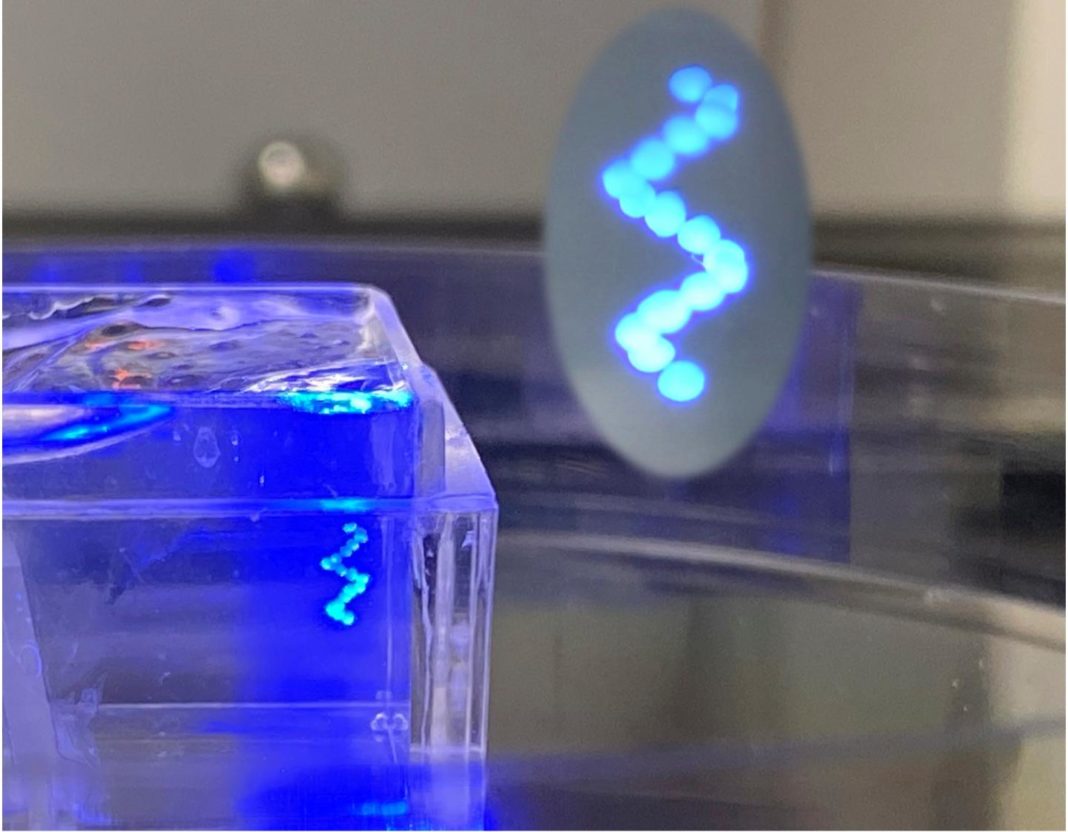Engineers at Penn State University say they used a yield stress gel to place tiny aggregates of cells exactly where they want to build the complex shapes that will be necessary to replace bone, cartilage, and other tissues.
“The reason why this is important is that the current cell aggregate bioprinting techniques can’t make complicated configurations and is mostly in 2D and 3D thin films or simple configurations,” said Ibrahim T. Ozbolat, PhD, Hartz Family Career Development Associate Professor of Engineering Science and Mechanics. “If we want complicated 3D, we need a supportive field.”
That supportive field, the researchers report “Aspiration-assisted freeform bioprinting of pre-fabricated tissue spheroids in a yield-stress gel” in Communications Physics is—a yield stress gel which is unusual in that without stress these are solid gels, but under stress, they become liquid.
The team is using an aspiration-assisted bioprinting system that they demonstrated earlier this year to pick up aggregates of cells and place them precisely inside of the gel. The stress of the aspiration nozzle against the gel liquefies it, but once the aspiration nozzle releases cell aggregates and withdraws, the gel returns to solid again, self-healing. The tiny balls of cells rest upon each other and self-assemble, creating a solid tissue sample within the gel.
The researchers can place different types of cells, in small aggregates, together to form the required shape with the required function. Geometric shapes like the cartilage rings that support the trachea, could be suspended within the gel.
“Bioprinting of cellular aggregates, such as tissue spheroids, to form three-dimensional (3D) complex-shaped arrangements, has posed a major challenge due to lack of robust, reproducible and practical bioprinting techniques. Here, we demonstrate 3D aspiration-assisted freeform bioprinting of tissue spheroids by precisely positioning them in self-healing yield-stress gels, enabling the self-assembly of spheroids for fabrication of tissues,” write the investigators.
“The presented approach enables the traverse of spheroids directly from the cell media to the gel and freeform positioning of the spheroids on demand. We study the underlying physical mechanism of the approach to elucidate the interactions between the aspirated spheroids and the gel’s yield-stress during the transfer of spheroids from cell media to the gel.”
“We further demonstrate the application of the proposed approach in the realization of various freeform shapes and self-assembly of human mesenchymal stem cell spheroids for the construction of cartilage and bone tissues.”
“We tried two different types of gels, but the first one was a little tricky to remove,” said Ozbolat. “We had to do it through washing. For the second gel, we used an enzyme that liquefied the gel and removed it easily.”
“What we are doing is very important because we are trying to recreate nature,” added Dishary Banerjee, PhD, postdoctoral researcher in engineering science and mechanics. “In this technology it is very important to be able to make free-form, complex shapes from spheroids.”



